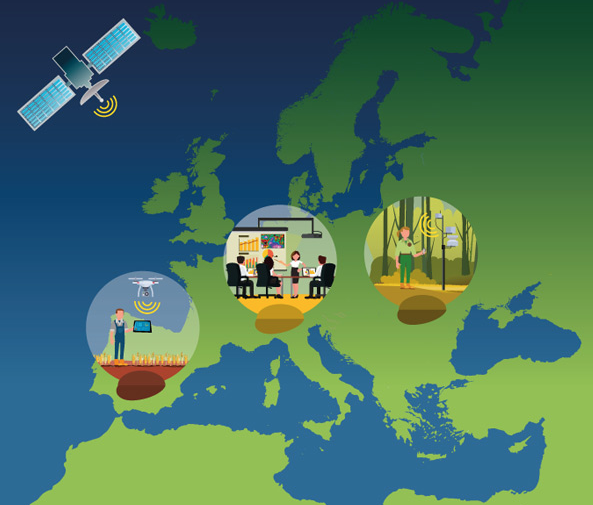
- Publication
Abstract: This first Strategic Research and Innovation Agenda (SRIA) for Earth Observation sets out a comprehensive framework for Copernicus' research and technological development. It outlines key priorities for the Horizon Europe Work Programmes for 2025-2027 and beyond into the next Multi-annual Financial Framework, ensuring that Copernicus and its products and services remain state-of-the-art.
Copernicus, a key component of the EU Space Programme, provides Earth observation data through satellites, contributing missions, and in-situ data sources. This wealth of information is transformed into actionable services across six thematic areas: land, ocean, atmosphere, climate change, emergency, and security. The SRIA aims to ensure the continuity and evolution of these services.
The SRIA outlines how Earth Observation (EO) is integral to the EU Policy goals, such as in the implementation of the European Green Deal. The SRIA will contribute to guiding Copernicus' evolution, emphasizing agile, resilient data streams, digital transformation, and expanded services. Enhancing policy uptake and downstream adoption is crucial, ensuring Copernicus meets evolving user needs and drives economic growth, societal well-being, and security in Europe. The report emphasizes the need for comprehensive support for Copernicus' services, ensuring they stay relevant and beneficial for European and global policy goals. The SRIA addresses the individual R&I needs of each service and their components.
The SRIA also addresses horizontal elements and priorities to create synergies and efficiencies across services. Key initiatives include Thematic Hubs, which centralize access, enhance services, and specific cross-cutting applications. Computing and data infrastructures, Digital Twins, and AI/ML also play pivotal and growing roles in advancing Earth observation. Coordination across entities, EU policies, and global organizations fosters seamless integration, maximizing Copernicus' impact. The strategy emphasizes the evolution of services and technologies, particularly through research, data integration, and user-centric developments. Collaborative efforts with European and global partners further strengthen Copernicus, aligning it with broader policy goals and ensuring effective implementation across diverse sectors and communities.
The SRIA concludes by emphasizing three dimensions that need to be addressed in its implementing. These are the Earth observation research and innovation activities themselves, the delivery and evolution of sustained Earth Observation services and the underlying policy needs for data and information derived from Earth observation. To monitor the successful implementation of the strategy a key focus should be on the interfaces and connections between the different dimensions identified. This then allows to identify specific metrics that can be followed.Authors: RIXEN Michel; DOWELL Mark; IMMLER Franz; DUSART J.; KRISTOPAITIS Evaldas
Citation: Rixen, M., Dowell, M., Immler, F., Dusart, J. and Kristopaitis, E., Earth Observation Strategic Research and Innovation Agenda, Publications Office of the European Union, Luxembourg, 2024, doi:10.2760/18985, JRC136730.
Date available: 2024-05-14
Publisher: Publications Office of the European Union
JRC number: JRC136730
ISBN: 978-92-68-14333-9 (online)
ISSN: 1831-9424 (online)
Other identifiers: EUR 31903 EN, OP KJ-NA-31-903-EN-N (online)

